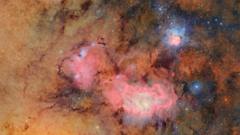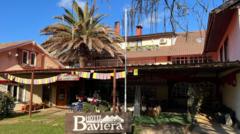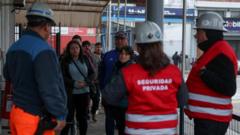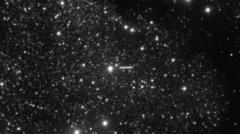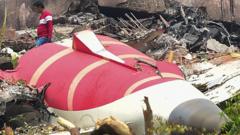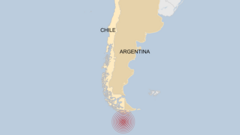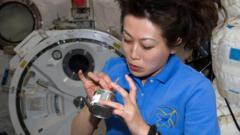A new era of astronomical exploration has begun as the Vera Rubin Observatory in Chile unveils its first celestial images, showcasing its remarkable capabilities to explore the universe. One of the breathtaking images features colorful gas and dust clouds that swirl in a star-forming region located 9,000 light years away from Earth. The observatory houses the world's most advanced digital camera and is expected to revolutionize our understanding of the cosmos.
Set against the backdrop of the serene Cerro Pachón mountain in the Chilean Andes, the observatory is engineered to capture the darkest and most detailed views of the night sky. Its mission includes identifying near-Earth asteroids, unveiling the mysteries of dark matter, and even discovering a potential ninth planet hidden within our solar system. If such a planet exists, scientists believe it could be detected within the telescope's inaugural year.
Astronomer Royal for Scotland, Professor Catherine Heymans, expressed her excitement about this landmark achievement, noting that she has been working toward this goal for about 25 years. The UK's involvement in the project includes hosting data centers to manage the vast amount of detailed imagery captured during the telescope's decade-long survey of the southern night sky.
BBC News recently visited the observatory, where stringent measures are in place to maintain darkness optimal for star observation. The dome of the telescope is equipped to minimize stray light, ensuring that incoming starlight remains as undisturbed as possible. With a goal of understanding the universe's history, the observatory is designed for obtaining extraordinarily sharp images of faint galaxies and ancient supernovae.
The Vera Rubin Observatory's camera boasts an incredible 3,200 megapixels, a design built by the U.S. Department of Energy's SLAC National Accelerator Laboratory. This sophisticated arrangement of mirrors allows astronomers to capture an abundance of light, enabling the observation of distant objects that could hold insights into the very beginnings of the universe. It captures images every 40 seconds for approximately 8-12 hours each night, generating vast amounts of data.
According to experts, the survey will focus on four pivotal areas: tracking transient objects, investigating the formation of the Milky Way, cataloging solar system bodies, and studying dark matter. The ability to repeatedly survey the same regions will yield detailed insights into celestial changes over time.
Professor Alis Deason from Durham University emphasized the transformative nature of the data the Vera Rubin Observatory will produce, predicting it will be the largest ever collected for galaxy observation. With the potential to expand our understanding of the Milky Way's boundaries to 1.2 million light years, the telescope could illuminate the secrets of our solar system's stellar halo and the whereabouts of faint satellite galaxies.
Furthermore, Vera Rubin's observations may finally hold answers to the long-speculated existence of Planet Nine, believed to orbit far beyond the reaches observable by traditional telescopes. "Understanding how this new beautiful observatory works will take time, but I am more than ready for it," said Professor Heymans, setting a tone of anticipation and excitement for forthcoming astronomical discoveries.

